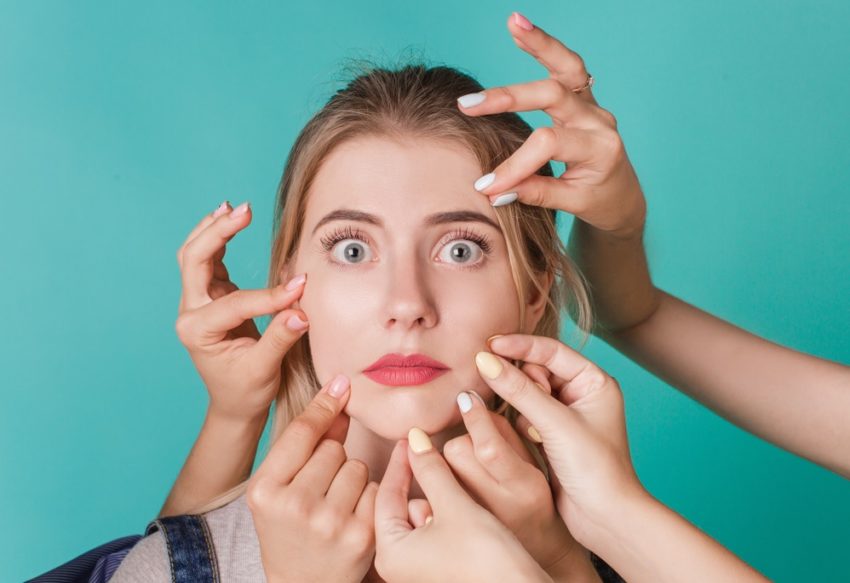From poison ham to migraine relief: The many faces of Botox

How did one of the deadliest substances known to man become a go-to treatment for gerontophobic celebrities?
Botulinum toxin is considered the deadliest substance ever known. A neurotoxin that disrupts the normal function of nerve cells, exposure to even minute amounts of the toxin can cause paralysis and eventually death from respiratory failure. So how did botulinum toxin go from ultimate foe to dearly beloved friend of the medical community?
Botulinum toxin is produced by the spores of the bacterium Clostridium botulinum, and was initially discovered after attendees at a funeral dinner in a small Belgian village became sick with symptoms previously termed ‘sausage poisoning’ after eating smoked ham. Three of them died. The disease was named re-named botulism, after the Latin for sausage, ‘botulus’.
Botulinum toxin tends to cause three types of poisoning.
The first is similar to old-fashioned food poisoning, though far more serious and usually from food stored with a low level of oxygen, like canned food (so be careful what you eat during the apocalypse).
The second is infant botulism, where the bacterial spores grow in the baby’s intestinal tract, leading to difficulty swallowing and breathing (this is why babies younger than 12 months should not be given honey).
The third is when bacterial spores get into an open wound and reproduce; the World Health Organisation (WHO) report that this form of botulism may be associated with substance abuse, particularly in those injecting black tar heroin.
There is a fourth possible kind of poisoning, inhalation poisoning, which is extremely rare, extremely fatal, and only likely to occur in an instance of, say… bioterrorism.
Indeed, botulinum toxin was weaponised by the chill folk in Imperial Japan and Nazi Germany, as well as the Soviets, the Middle East, the United States and North Korea. I bet you’re thinking, “I can’t wait to inject this stuff straight into my face!”
In need of a serious image overhaul, the 1950s brought the timely discovery that botulinum toxin could be used therapeutically to treat hyperactive muscles. Injecting the neurotoxin into the problematic muscle works by blocking the release of acetylcholine, the neurotransmitter that activates muscles, effectively paralysing the muscle and normalising its size. But it wasn’t until 1989 that botulinum toxin type A was first actually approved for therapeutic purposes: as a treatment for strabismus (crossed eyes), blepharospasm (involuntary blinking or closing of the eyes) and hemifacial spasm (involuntary spasms in the muscles on one side of the face). Botulinum, you little ripper!
Of course these days botulinum toxin is often known by its far less threatening moniker ‘botox’, and people actually do, of course, inject it right into their faces. Botulinum toxin was approved for cosmetic use in 2002 and faces all over the world wrinkled up with pleasure.
Botox is injected into muscles where wrinkles tend to form, paralysing the muscles. Because the muscle cannot contract, the wrinkles soften and become less visible. The effects wear off after a few months, meaning that you need regular treatments and deep pockets to maintain your creaseless visage. There has also been a rise in young people undergoing what could be considered ‘prophylactic botox’. The theory, backed by no definitive evidence, is that with repeated administrations the muscles begin to atrophy from underuse and so wrinkles are less likely to form. Other strategies for ageing gracefully, backed by significant evidence, include eating well, not smoking, and wearing sunscreen.
It’s not all poison sausages and serene expressions, though, Botox is actually a promising treatment for migraine. So much more than ‘a bad headache’, migraines are something more akin to Dante’s seventh circle of hell, complete with the boiling blood. The Australian Bureau of Statistics estimates that around six per cent of Australians experience migraines, nearly all of whom are unable to fully participate in social or occupational activities because of their symptoms.
Anyway, migraine sufferers getting botox for cosmetic reasons started to experience some relief in their symptoms, much to the amusement of the medical community. Though the how and why of its effectiveness is largely unclear (minor details, really), their stories checked out, and now botox is an approved intervention for chronic migraines.
So whether you’re seeking eternal youth or escape from Dante’s Inferno, it seems the many-faced God of botox has got you covered. Just avoid the poison funeral ham.
Dr Jessica L Paterson, Senior Research Fellow, CQUniversity, Appleton Institute